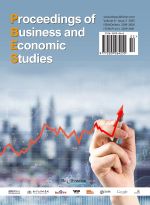Accelerating the Construction of Remote Medical Service Network in Qinhuangdao City: Countermeasures and Suggestions to Improve Rural Elderly Care Services
Abstract
With the intensifying aging population, rural elderly care services are facing challenges such as uneven medical resources and inadequate facilities. Taking Qinhuangdao City as an example, this paper explores ways to improve rural elderly care services through the construction of a remote medical service network. This paper analyzes the current status of rural elderly care services in Qinhuangdao City, pointing out that issues such as the uneven distribution of medical resources between urban and rural areas, poor accessibility, and low service quality urgently need to be addressed. The necessity of accelerating the construction of a remote medical network is proposed, including reducing medical costs, optimizing resource allocation, and disease prevention. Specific measures cover aspects such as policy support, integration of medical and elderly care services, talent cultivation, and technology promotion. At the same time, the potential challenges and risks faced by the remote medical service network in improving rural elderly care services are evaluated, and corresponding countermeasures and suggestions are proposed. Research shows that remote medical care can effectively improve the quality of rural elderly care services and help achieve proper medical care for the elderly.
References
Yang J, 2023, The Digital Divide Among Rural Elderly Population and the Current Situation, Problems, and Countermeasures of Smart Healthcare. Social Science Journal, (04): 72–81 + 238.
Wen Y, 2022, Research on the Health Management of Elderly People Living Alone Through the Construction of a Smart Elderly Care Service Platform Integrating Medical and Nursing Care. Journal of Traditional Chinese Medicine Management, 30(07): 194–196.
Ran X, Hu H, 2022, Urban-rural Differences, Digital Divide, and Health Inequality Among the Elderly. Population Journal, 44(03): 46–58.
National Bureau of Statistics, 2022, China Statistical Yearbook 2022, China Statistics Press, Beijing.
Feng H, 2020, Research on the Development of Rural Medical and Nursing Integrated Pension Mode under Population Aging, dissertation, Shandong University.
Tang X, Qin F, Fang L, 2019, Discussion on the Problems and Countermeasures of Accelerating the Development of Medical and Nursing Integration. World Latest Medicine Information, 19(42): 216.
Xu L, Zhuang P, Huang Y, et al., 2022, Research on the Coexistence of Comorbidities of Chronic Diseases and Unhealthy Lifestyles Among Elderly People in Xiamen Community. Modern Preventive Medicine, 49(17): 3198–3204.
Zhan H, 2022, The Role of Government in the Supply System of Elderly Care Services: Analysis and Lessons from the United States. Economic Data Translation, (04): 14–24.
Wu W, Hao Z, Wu Y, et al., 2020, Practice of Heterogeneous Integration of Remote Medical System in Yimeng Mountain Area. China Digital Medicine, 15(08): 107–109.
Li L, Li Y, Chen X, et al., 2022 An Empirical Study on the Impact of Community Family Doctor Contracting on the Utilization of Medical Services by the Elderly. Social Security Research, (02): 45–58.

